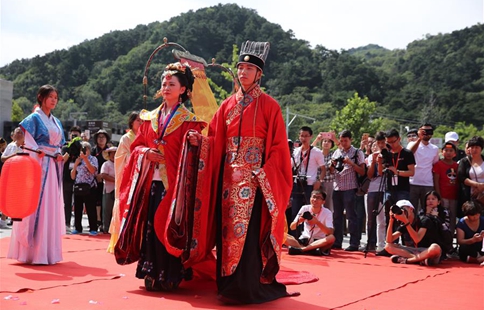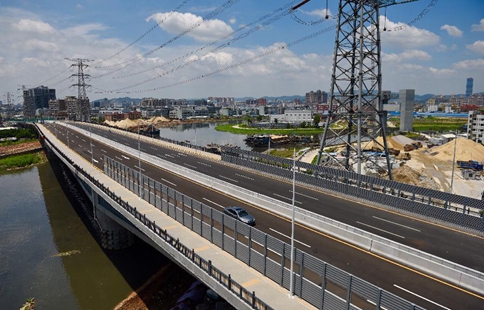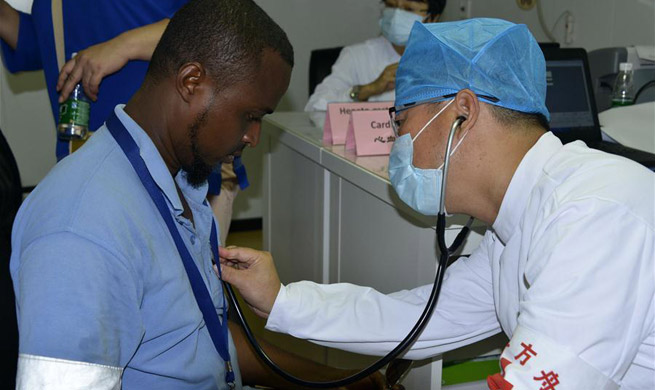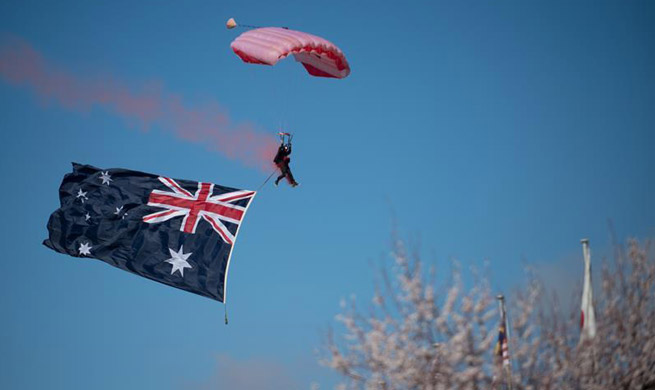by Xinhua writers Xu Liyu, Chen Junxia, Ding Yi, Jin Zheng
NAIROBI, Aug. 27 (Xinhua) -- After a ride on Kenya's newly-launched Standard Gauge Railway (SGR), Nairobi Railway Museum guide Daniel Shikoli felt an urge to tell visitors what it meant for the country to run a new, modern rail link after a century-long hiatus in rail projects.
Like Shikoli, Kenyans have good reason -- and ample opportunities -- to be excited. A trip by the Chinese-built SGR linking the port city of Mombasa and the capital Nairobi takes less than five hours for an otherwise tedious journey either by road or by a colonial-era railway.
Kenya Railways currently operates one daily service from Nairobi to Mombasa and another from Mombasa to Nairobi and is looking into the possibility of increasing the frequency of trains.
"It's so nice. The trip took only more than four hours," said Shikoli, who was among the first Kenyans to ride on the modern train.
Shikoli's one-off experience with the SGR came about thanks to a reward ticket from Kenya Railways which runs the Nairobi Railway Museum. But soon, his encounter with the new railway will become long running -- the museum has dedicated a room to the SGR and is in preparations to put the SGR section on show.
He said many newly-weds in Nairobi would visit the museum to avail themselves of the ages-old locomotives on display as a setting for their pre-wedding photograph. And a large number of school children patronize the museum for extended learning of history.
"They'll have more to see and learn how this railway changed our life," he said.
A GAME CHANGER
The SGR runs largely parallel to the meter-gauge railway that was originally built by British colonialists in the 19th century. The Nairobi Terminus is not only the end point of the SGR -- it is where it meets the old railway to facilitate onward journeys.
Mostly bankrolled by China and built by a Chinese company, the 480-km railway is Kenya's biggest infrastructure project since independence and is expected to help boost the East African nation's GDP by 1.5 percent annually.
The Kenyan government estimated that the new railway would cut the costs of freight service in East Africa by 79 percent and the time for delivery by half. The cost of doing business, as a result, would drop as much as 40 percent.
For many Kenyans, the SGR is tantamount to comfort and speed, and as such, the tourism industry stands to benefit from it.
Mombasa, a seaside resort town, traditionally sees a low season in tourist arrivals in June, but after the SGR had been in place, holidaymakers were flocking to the city.
Kenyan officials said in late July that the new railway had transported over 150,000 passengers between Mombasa and Nairobi in nearly two months since it was commissioned on May 31.
"The SGR project will open up the African hinterland and transform the life of ordinary citizens," Kenyan President Uhuru Kenyatta highlighted in May.
Ephantus Kennedy, who joined the SGR as a train conductor after quitting his job as a flight attendant, told Xinhua he was lured by "opportunities in career growth" at the SGR.
A 2016 report on the social responsibilities of the Mombasa-Nairobi SGR said the project created 46,000 jobs in Kenya.
And for Kenya and the region, the Mombasa-Nairobi SGR is a starting point.
Under the East African Railway Master Plan, the Mombasa-Nairobi SGR will eventually link up with other standard gauge railways being built across the region.

















